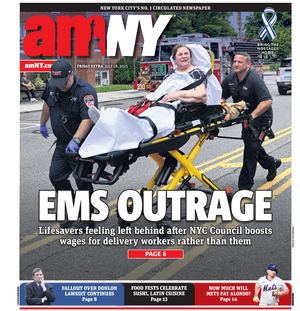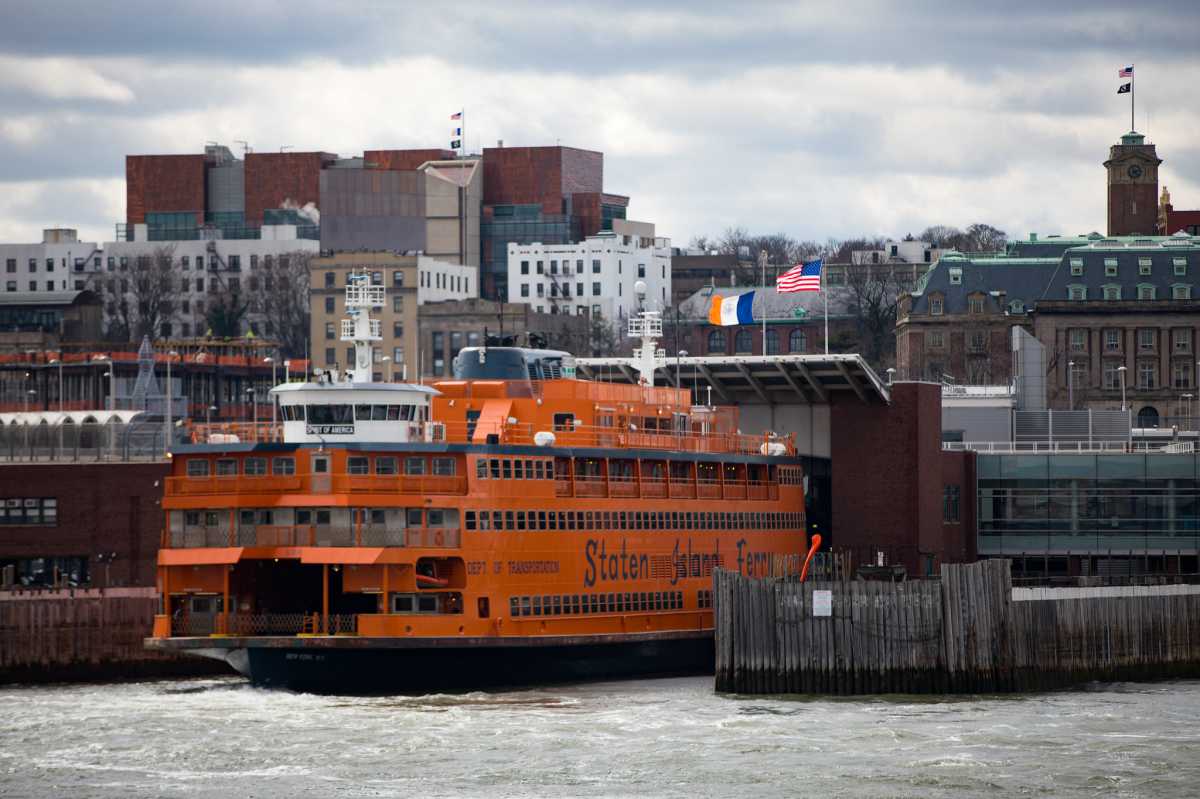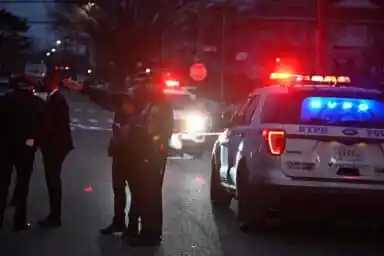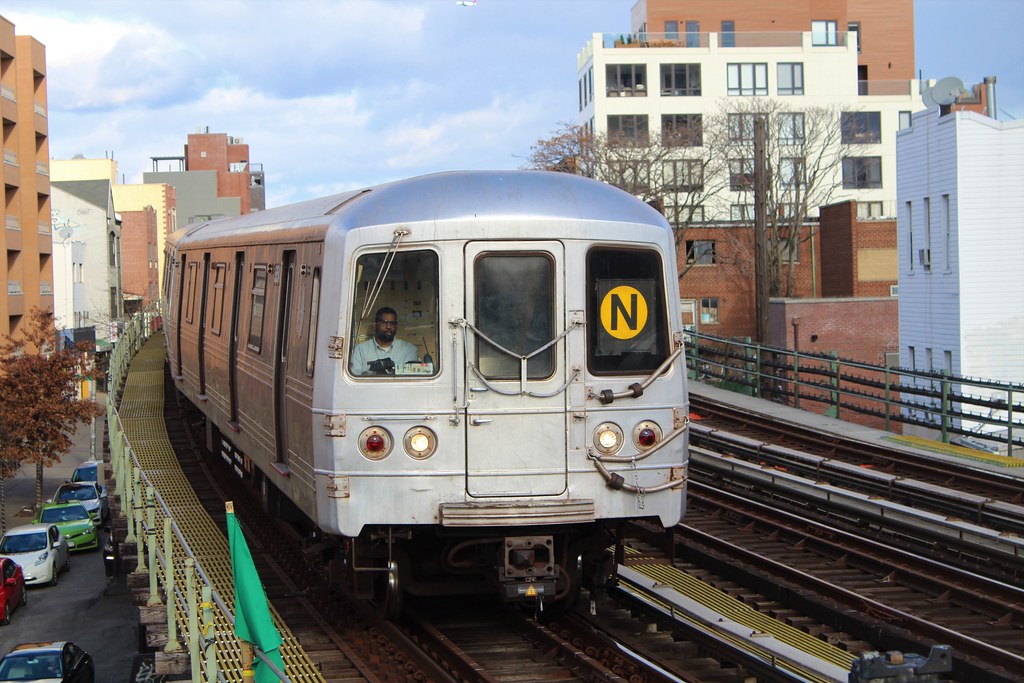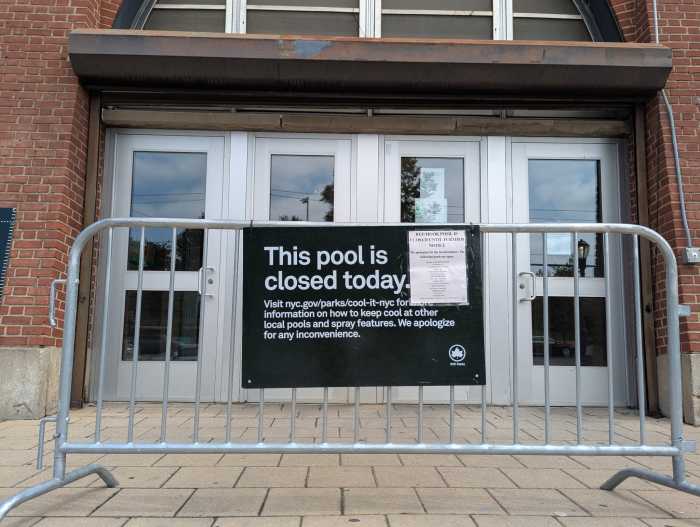The Staten Island Ferry terminal in Lower Manhattan has long been a place where homeless New Yorkers seek shelter, but according to many NYC commuters, it has become even more so lately.
Historic Whitehall Terminal, a bustling gateway for commuters and tourists alike, is showing a persistent and heartbreaking reality of the homeless crisis plaguing New York City.
Unhoused New Yorkers seek shelter in the terminal, as it offers a semblance of refuge from the elements of weather and the streets. The waiting area is spacious with seating, and it is open all day, every day.
However, the conditions are far from ideal, with individuals often sleeping on hard benches or the floor, their belongings tucked away in bags or carts. Some also ride the free ferry, which is run by the NYC Department of Transportation (DOT).
amNewYork spoke to several ferry commuters, whose emotions about the problem ranged from empathy to frustration.
“I saw three homeless people sleeping outside the terminal the other day, and no one seemed to notice them,” one ferry-goer told amNewYork on a recent Monday. “I can’t help but wonder if any help is being offered to them.”

Christopher Altieri, another commuter who uses the ferry to go to and from work in Manhattan, said conditions in the terminal and on board have “not improved at all,” even after Gov. Kathy Hochul implemented Safe Options Support (SOS), a state homeless support program, on Staten Island’s water and rail transportation systems in February.
“The Staten Island Ferry is a moving floating shelter,” he said. “And the Whitehall entrance is a homeless encampment that hard-working citizens have to walk through to use a mass transit system that NYC socialists insist we use.”
The homeless seeking refuge on NYC transportation systems, especially subways and in terminals, is nothing new. Though it is difficult to give an exact number, approximately 2,000 people live in the NYC’s subway system alone, at least according to last year’s HOPE count — an initiative that annually estimates the number of homeless people living in public places such as subways and parks.
Alteri said he has contacted city elected officials from Manhattan and Staten Island out of concern for the homeless and his fellow commuters.
“This is in plain sight,” Altieri said. “Everybody is aware.”
NYC’s Department of Social Services (DSS), which manages outreach teams by the Department of Homeless Services (DHS) and non-profit providers, canvases streets and subways every day, “engaging New Yorkers experiencing unsheltered homelessness, building trust, and encouraging them to come inside and accept services,” a DSS spokesperson said.
“As a result of unprecedented investments by the Adams administration, DHS has bolstered support for our unsheltered neighbors, intensifying outreach efforts and opening over 1,600 new specialized shelter beds to serve this especially vulnerable population,” the spokesperson said.
The measures, the agency reports, have helped move homeless New Yorkers into shelter and permanent housing.
“Last year alone, nearly 1,200 New Yorkers–people who were previously living on the streets and subways–were connected to stable permanent homes from specialized beds, and as we bring even more such beds online, we look forward to building on this impressive progress,” the spokesperson said.
Meanwhile, the state’s SOS program on Staten Island is still new and has only been active since February. But so far, the initiative has a handful of members who, like the city agency teams, canvass locations around the borough twice a day. Through the nonprofit Breaking Ground, the teams supplement existing efforts by local outreach providers on Staten Island to provide support and placement to homeless individuals.
“Breaking Ground’s SOS team on Staten Island is making connections within the community and establishing the trust that is central to providing lasting housing stability to chronically unsheltered individuals,” a spokesperson for the governor told amNewYork. “This team will grow in coming months, and the building blocks already established will provide a foundation for them to bring meaningful change to these people and the community as a whole.”
So far, the Staten Island SOS team has helped eight people enter the shelter system and has two enrolled for regular services, state officials said.
SOS teams do not have police escorts but are trained to recognize an emergency situation and call 911 when needed, state officials told amNewYork in February.
Meanwhile, as those in charge continue to grapple with the complex issue of homelessness, commuters remain concerned but hopeful that things will get better.
